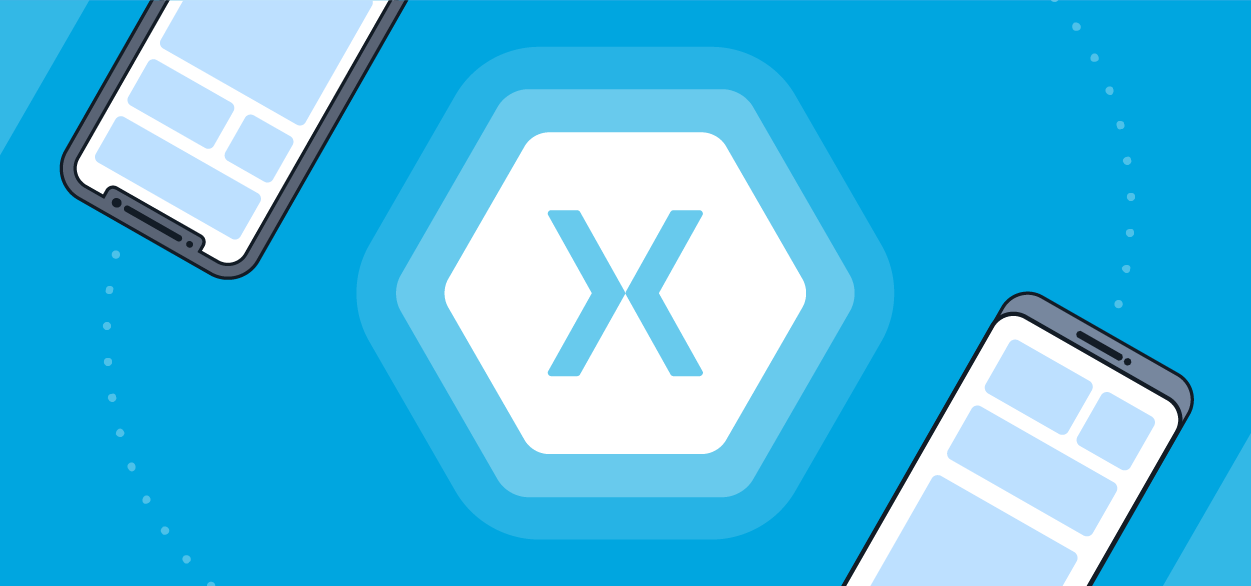In today’s world, mobile applications are the cornerstone of business success. With the increasing demand for smartphones and tablets, businesses must create mobile applications to stay competitive. However, developing a mobile app that works seamlessly across multiple platforms is challenging.
Enter Xamarin, a platform for mobile app development that allows developers to create native Android, iOS, and Windows applications using a single codebase. In this blog, we’ll explore what Xamarin is and how it can help you develop high-quality mobile applications.
What is Xamarin?
Xamarin is a popular platform for mobile app development that enables developers to create native applications for multiple platforms using a single codebase. It’s based on the .NET framework, and developers can use C# as the programming language. Xamarin provides a set of tools that can be used to build native UIs for iOS, Android, and Windows, as well as provide access to the platform-specific APIs.
Why Xamarin for Mobile App Development?
Mobile app development using Xamarin has gained immense popularity in recent years and for a good reason. It offers several benefits that make it a compelling option for mobile app development.
Code Sharing
Xamarin allows developers to write code once and use it across multiple platforms. This is possible because Xamarin uses a shared codebase, allowing developers to reuse their code across multiple platforms. This results in faster development times and reduced costs, as developers don’t have to write separate code for each platform.
Native Performance
Xamarin allows developers to create native apps that run at native speed. This is because Xamarin apps compile native code, meaning they can take advantage of the full capabilities of the underlying platform. This results in fast and responsive apps that provide a great user experience.
Access to Native APIs
Xamarin provides access to platform-specific APIs, which allows developers to create native user interfaces and access platform-specific features such as GPS, camera, and push notifications. This means that developers can create optimized apps for each platform and take advantage of each platform’s unique features and capabilities.
Large Community
Xamarin has a large and active community of developers who share their knowledge and contribute to open-source projects. This community provides developers access to many resources, including sample code, libraries, and tutorials. Developers can also collaborate with other developers, share their knowledge, and contribute to open-source projects, which can help them improve their skills and create better apps.
Integration with Visual Studio
Xamarin integrates seamlessly with Visual Studio, making it easy for developers to build, debug, and test their applications. This integration allows developers to use familiar tools and workflows, which can help them be more productive and efficient.
In addition to these benefits, Xamarin offers excellent cloud services support, including Azure Mobile Services and Azure Notification Hubs. This allows developers to build mobile apps that can scale to meet the needs of their users and provide a great user experience.
Steps to Develop a Mobile App Using Xamarin
Developing a mobile app using Xamarin is a straightforward process that involves several steps. In this section, we’ll explore each step in more detail.
Install Visual Studio
Installing Visual Studio is the first step in developing a mobile app using Xamarin. Visual Studio is a powerful IDE that provides various tools for building and testing applications. To install Visual Studio, you’ll need to download it from the Microsoft website and follow the installation instructions.
Create a New Xamarin Project
Once you’ve installed Visual Studio, you can create a new Xamarin project. Visual Studio provides a range of project templates that you can use to get started quickly. These templates include pre-configured settings and structures for building iOS, Android, and Windows apps.
Write Your Code
With your project set up, you can start writing your code. Xamarin uses C# as the programming language, so you’ll need a basic understanding of C# to get started. Xamarin also provides a range of libraries and tools to help you build your app, including Xamarin. Forms allow you to create a user interface that works across multiple platforms.
Test Your App
Once you’ve written your code, you can test your app using the built-in testing tools in Visual Studio. Xamarin provides various testing tools that allow you to test your app on multiple devices and platforms. This includes support for emulators, simulators, and physical devices. Testing your app is an important step in the development process, as it helps you identify and fix any bugs or issues before you publish your app.
Publish Your App
Once you’ve tested your app and are happy with it, you can publish it to the Google Play, App Store, or the Windows Store. Xamarin provides tools to help you package and distribute your app to these stores, making it easy to get your app into the hands of users.
In conclusion, developing a mobile app using Xamarin involves several steps, including installing Visual Studio, creating a new Xamarin project, writing your code, testing your app, and publishing your app.
Final Thoughts
Xamarin is a powerful platform for mobile app development that enables developers to create native applications for multiple platforms using a single codebase. With its code-sharing capabilities, native performance, access to native APIs, and large community, Xamarin is an excellent choice for businesses looking to develop high-quality mobile applications.



